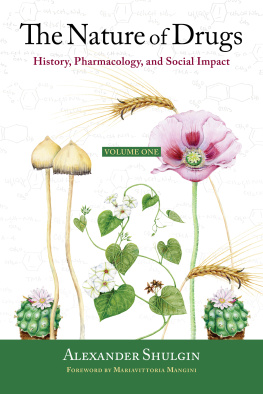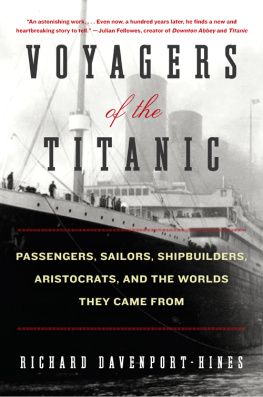Richard Davenport-Hines - The Pursuit of Oblivion: A Social History of Drugs
Here you can read online Richard Davenport-Hines - The Pursuit of Oblivion: A Social History of Drugs full text of the book (entire story) in english for free. Download pdf and epub, get meaning, cover and reviews about this ebook. year: 2012, publisher: Orion Publishing Group, genre: Art. Description of the work, (preface) as well as reviews are available. Best literature library LitArk.com created for fans of good reading and offers a wide selection of genres:
Romance novel
Science fiction
Adventure
Detective
Science
History
Home and family
Prose
Art
Politics
Computer
Non-fiction
Religion
Business
Children
Humor
Choose a favorite category and find really read worthwhile books. Enjoy immersion in the world of imagination, feel the emotions of the characters or learn something new for yourself, make an fascinating discovery.

- Book:The Pursuit of Oblivion: A Social History of Drugs
- Author:
- Publisher:Orion Publishing Group
- Genre:
- Year:2012
- Rating:3 / 5
- Favourites:Add to favourites
- Your mark:
- 60
- 1
- 2
- 3
- 4
- 5
The Pursuit of Oblivion: A Social History of Drugs: summary, description and annotation
We offer to read an annotation, description, summary or preface (depends on what the author of the book "The Pursuit of Oblivion: A Social History of Drugs" wrote himself). If you haven't found the necessary information about the book — write in the comments, we will try to find it.
Richard Davenport-Hines: author's other books
Who wrote The Pursuit of Oblivion: A Social History of Drugs? Find out the surname, the name of the author of the book and a list of all author's works by series.
The Pursuit of Oblivion: A Social History of Drugs — read online for free the complete book (whole text) full work
Below is the text of the book, divided by pages. System saving the place of the last page read, allows you to conveniently read the book "The Pursuit of Oblivion: A Social History of Drugs" online for free, without having to search again every time where you left off. Put a bookmark, and you can go to the page where you finished reading at any time.
Font size:
Interval:
Bookmark:
THE PURSUIT OF OBLIVION
I have to confess to an addiction. It has involved staying up too late, snorting on public transport, giggling, harrumphing in disgust, falling asleep with my clothes on and defacing printed pages. Now my supply has run out and I need to talk about it. Its this book see. Its author is peddling the real thing and he hasnt missed a trick. Like cannabis it increases the appetite and makes you laugh at unexpected things.
Iain Millar, Independent on Sunday
His book is a technical triumph: well researched, well written, well presented
Felipe Fernndez-Armesto, Independent
Absolute sobriety is not a natural or primary human state, asserts Richard Davenport-Hines at the beginning of this voluminous and comprehensive history of drug-taking. The evidence he produces is overwhelming
Economist
It is refreshing to read an analysis of drugs that is neither evangelical nor reactionary
Scotland on Sunday
Davenport-Hines has attempted an ambitious history of drug use over five centuries, and has come up with a mass of fascinating material
Will Cohu, Daily Telegraph
The fact that the American anti-drug lobbys obsession with the total prohibition of recreational drugs was allowed to influence policy in the Pacific war is just one of the amazing revelations in this seminal work. Many others make it the most important study on this subject in years, perhaps ever. It strips away the propaganda, prejudice, rumour, rhetoric and misinformation that has sullied the drugs debate until now. Here at last is a scholarly, historical study of drugs and their role in society... Everyone with any influence on government policy should read this book and wake up before its too late
Phillip Knightley, Sunday Times
For AJH


Contents
ONE
Early History
TWO
Opium during the Enlightenment
THREE
The Patent Age of New Inventions
FOUR
Nerves, Needles and Victorian Doctors
FIVE
Chemistry
SIX
Degeneration
SEVEN
The Dawn of Prohibition
EIGHT
Law-breaking
NINE
Trafficking
TEN
The Age of Anxiety
ELEVEN
The First Drugs Czar
TWELVE
British Drug Scenes
THIRTEEN
Presidential Drugs Wars
FOURTEEN
So Pass
History is the most dangerous concoction the chemistry of the mind has produced. Its properties are well known. It sets people dreaming, intoxicates them, engenders false memories, exaggerates their reflexes, keeps old wounds open, torments their leisure, inspires them with megalomania or persecution complex, and makes nations bitter, proud, insufferable and vain.
History can justify anything you like. It teaches strictly nothing, for it contains and gives examples of everything.
PAUL VALRY , Regards sur le Monde Actuel
Hidden worlds haunt our imagination. The underworld of criminals; the Underground; the demi-monde (occupied in part by the inhabitants of polite society, wearing as it were, their Hyde aspects.)
The world of the gods; Shangri La; Middle Earth; the world through the Looking-Glass.
The Mafia; the Establishment; the System; the great conspiracy of the left; the great conspiracy of the right.
Of these five apparently normal, respectable citizens, one is a ruthless murderer who disembowelled Sir Toby with the ornamental Javanese paper-knife! At once they all five become deep, interesting in their very uninterestingness.
MICHAEL FRAYN , Constructions
The need to go astray, to be destroyed is an extremely private, distant, passionate turbulent truth, and has nothing to do with what we call substance.
GEORGES BATAILLE , Le Coupable
The desire to take medicine is perhaps the greatest feature which distinguishes man from animals.
SIR WILLIAM OSLER
Every kind of addiction is bad, no matter whether the drug be alcohol, morphine or idealism.
CARL JUNG
Mitsubishis, 007s, Doves, New Yorkers, California Sunrises, M&Ms, Dennis the Menaces, Rhubarb and Custards, Snowballs, Blue Butterflies, McDonalds, Flatliners, Shamrocks, Swans, Swallows, Turbos, Phase Fours, Refreshers, Love Hearts, Riddlers, Pink Elephants these are some of the alluring brand names of Ecstasy available on the illegal British drug market at the start of the twenty-first century. The ingredients of each type of tiny pill vary according to their colour, size and the pictograms stamped on them. The diversity of the branding demonstrates the vigour of the business and the dynamism of the market.
The international illicit drug business generates $400 billion in trade annually, according to recent United Nations estimates. That represents 8 per cent of all international trade. It is about the same percentage as tourism and the oil industry. Yet many of the chief substances of this illicit business have been used for thousands of years to treat physical pain or mental distress as well as for pleasure. This book explores how licit medicines became the commodity of the worlds greatest illicit business.
Intoxication is not unnatural or deviant. Absolute sobriety is not a natural or primary human state. Drugs are variously swallowed, smoked, injected and inhaled. Though, at times, politicians speak or journalists write of drugs as if their characteristics collectively cohere, they fall into very different categories, with discrete powers and effects.
Narcotics relieve pain, induce euphoria and create physical dependency. The most prominent are opium, morphine, heroin and codeine.
Hypnotics cause sleep and stupor; examples include chloral, sulphonal, barbiturates and benzodiazepines. They are habit-forming and can have adverse effects. These side effects are shared with tranquillisers, which are intended to reduce anxiety without causing sleep.
Stimulants cause excitement, and increase mental and physical energy, but create dependency and may cause psychotic disturbance. Cocaine and amphetamines are the pre-eminent stimulants, but others include caffeine, tobacco, betel, tea, coffee, cocoa, qat and pituri.
Inebriants are produced by chemical synthesis: alcohol, chloroform, ether, benzine, solvents and other volatile chemicals.
Hallucinogens cause complex changes in visual, auditory and other perceptions and possibly acute psychotic disturbance. The most commonly used hallucinogenic is cannabis (marijuana). Others include LSD, mescaline, certain mushrooms, henbane and belladonna.
The working of these substances only began to be understood correctly by researchers in the last three decades. The human brain transmits pulses of electrical activity along nerve fibres connecting one nerve cell, or neuron, to another. These nerve cells are the source of neural activity in the brain. The transmission of the signal from cell to cell involves neurotransmitters that is, pulses of chemical signal molecules. Neurotransmitters excite or inhibit nerve cell firing, and are recognised by specific receptors, which are specialised proteins located in the cell membranes of target cells. Minute quantities of neurotransmitter chemicals are released: serotonin, which makes people feel satisfied, dopamine which arouses pleasurable feelings, and noradrenaline are crucial neurotransmitters so far as many controversial drugs are concerned. Cocaine and amphetamines, for example, can be enjoyable because their use causes neurotransmitters to release noradrenaline and dopamine. Morphine acts on three distinct receptors called collectively the opiate receptors which have been known only since the 1970s. In the same decade a group of neurotransmitters collectively called the endorphins were found to act as opiate receptors and block both sensory and emotional pain.
Next pageFont size:
Interval:
Bookmark:
Similar books «The Pursuit of Oblivion: A Social History of Drugs»
Look at similar books to The Pursuit of Oblivion: A Social History of Drugs. We have selected literature similar in name and meaning in the hope of providing readers with more options to find new, interesting, not yet read works.
Discussion, reviews of the book The Pursuit of Oblivion: A Social History of Drugs and just readers' own opinions. Leave your comments, write what you think about the work, its meaning or the main characters. Specify what exactly you liked and what you didn't like, and why you think so.










